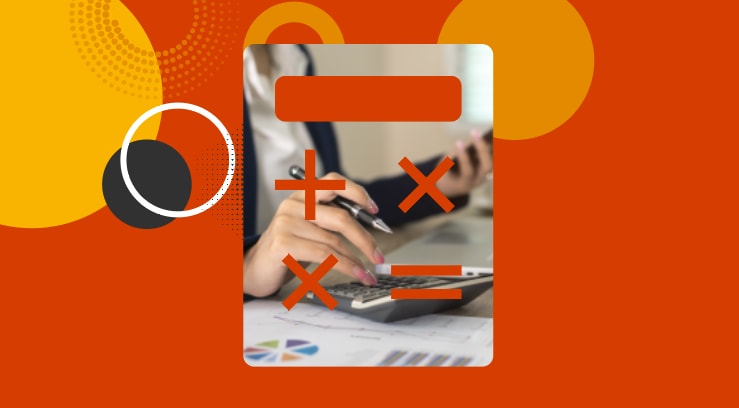{{item.title}}
{{item.text}}

{{item.title}}
{{item.text}}
On Tuesday 17 December 2024, the Senate voted in favour of the Tax Plan 2025 and the other bills presented on Budget Day. This page was regularly updated with the latest information during the parliamentary process. You can now read the final Tax Plan 2025 here.
The Tax Plan Package 2025 includes measures for entrepreneurs, individuals, and the international business community. Compared to last year, there are significant changes, and there have also been considerable alterations during the legislative process.
We therefore invite you once again to visit this website, so you can determine what you need to take into account.
Are you curious about whether you are eligible for legal recovery, calculate this with the Box 3 calculation model legal recovery.
View the key tax measures from the Tax Plan or consult the tax factsheet for an overview of the 2025 and 2024 tax rates. You can read an overview of the key findings from the budget of all ministries in the Highlights Budget Memorandum.
Our specialists are ready to work with you to create sustainable solutions for your tax challenges.
The income from where the top rate applies will be reduced by €557 compared to the previously set amounts. As a result, income from box 1 will be taxed at the high rate sooner.
The phasing-out of the general tax credit is based on the aggregate income (previously only box 1 income). As a result, phasing-out is faster in the case of box 2 and box 3 income.
The SME profit exemption will be reduced from 13.31% to 12.03% according to the Spring Memorandum, but to 12.7% according to the Outline Agreement.
The box 2 top tax rate goes down from 33% (2024) to 31% (2025).
The box 3 tax rate will go down, it is not yet known to what percentage (2024: 36%).
The green investments exemption in box 3 will be reduced from EUR 71,251 (for tax partners EUR 142,502; in 2024) to EUR 30,000 (for tax partners EUR 60,000) by 2025.
Adjustment in the income tax to allow the taxation right to be effective in the Netherlands in situations where the taxation right is assigned to the Netherlands on the basis of the announced amendment protocol to the Netherlands-Germany tax treaty.
The Outline Agreement includes the intention to reduce the burden on labour and lower the marginal income tax pressure. The introduction of an additional (third) income tax bracket is mentioned as an example.
Adjustments may be made to the extraterritorial costs scheme, including the 30% ruling. For any adjustments the evaluation study of SEO will be used. Read our Tax News article about this research.
The government proposed in the Spring Memorandum to increase the energy tax on natural gas in the third, fourth and fifth brackets by 22.4 percent as of 2025 and to increase the rates with an extra 2.7 percent in 2030. In the Outline Agreement, these increases are reversed and in the first and second brackets the rate is even reduced by 2.82 cents per m3.
For electricity consumers, the general tax reduction for energy tax will be increased by 4 euro cents including VAT. This will be legally established in the 2025 Tax Plan with retroactive effect to 1 January 2024.
The so-called netting scheme for solar panels of consumers will be abolished as of 2027. In the Spring Memorandum, the proposal was to maintain the netting scheme.
The government is introducing a separate rate in the energy tax for hydrogen as of 1 January 2026. The exact design of the reduced rate will be included in the legislative proposal for the 2025 Tax Plan.
The government proposes to abolish the exemptions for dual and non-energetic coal consumption (mainly the use of coal in steel production) by 2027.
A circular plastic levy will be introduced in 2028.
The government proposes to no longer exempt greenhouse gas installations for the incineration of urban waste from the Dutch CO2 levy industry.
A new temporary rate reduction within the motor vehicle tax (Dutch: “mrb”) is introduced for emission-free (EV) passenger cars:
In 2024, there is no motor vehicle tax levy for emission-free passenger cars. A rate reduction of 75 percent applies for 2025.
All other emission-free vehicles, such as EV vans and EV buses, will no longer receive motor vehicle tax reduction from 2026. These vehicles currently receive the same reduction as passenger cars.
European legislation leads to a new method for determining the CO2 emissions of hybrid-powered passenger cars (PHEV). Effectively, this results in a substantially higher CO2 emission for PHEV as of 1 January 2025 and a further increase as of 1 January 2027. The motor vehicle tax has a specific rate table for PHEV that must be adjusted due to this development. One possibility that is currently being focused on is the abolition of the separate rate table for PHEV.
In the Outline Agreement, the purchase of electric cars will continue to be supported, but all subsidies will stop by 2025, while the weight correction for electric cars (EV, fiscal) will remain in place. It is unclear whether the reduced addition for electric cars would then end in 2025 instead of 2026.
The excise duty reduction for fuels will be extended until 2025 and the so-called red diesel (lower excise duty rate) will be reintroduced for farmers, horticulturists and contractors as of 2027.
The air passenger tax will be differentiated by distance as of 2027.
The Random depreciation of environmental investments (Dutch: “Vamil”) and Environmental investment deduction (Dutch: "MIA”) each have a budget reserve to prevent the schemes from being closed prematurely if the annual budget is exhausted. The MIA budget reserve is almost depleted, and the Vamil budget reserve has grown in recent years. To balance this and prevent entrepreneurs from missing out on the MIA, the budget deficits of the MIA will be supplemented with the surpluses from the Vamil.
In practice, it happens that a VAT deduction right is created for a renovation service, which is ultimately mainly used for VAT-exempt services. To prevent this, a measure will be proposed that obliges entrepreneurs to compare the previously applied VAT deduction for five years (after the first year for 1/5th each time) with the use of the service (for taxed or exempt supplies) in that year. If there is a change in use, the initial VAT deduction must be corrected. The measure contains a transitional arrangement consisting of a postponed entry into force as of January 1, 2026, which offers the real estate sector the opportunity to prepare for the measure.
The reduced VAT rate for cultural goods and services – excluding cinemas and day recreation – will be abolished as of 2026.
The reduced VAT rate for accommodation – excluding camping sites – will be abolished as of 2026.
The RETT (de)merger exemption aims to prevent obstacles for companies aiming to restructure. The conditions for this exemption will become stricter, the proposed conditions are:
The exemption does not apply if a succession of different legal acts (merger, split, internal reorganization) is primarily aimed at tax avoidance.
With this adjustment, RETT exemption for land consolidations no longer applies to buildings, except for buildings which are used for commercial agricultural purposes. For the latter buildings, a continuation requirement applies.
The RETT exemption avoiding concurrence of the levy of both VAT and RETT will be adjusted as of 1 January 2025, to create a level playing field between share transactions and ‘brick’ transactions. This concerns situations in which a company holds newly developed real estate and instead of transferring the real estate itself (the ‘bricks’), transfers the shares. In such cases, neither VAT nor RETT is payable. The new legislation is aimed to solve this by ensuring that the acquisition of shares in such a scenario is subject to 4% RETT if the real estate is used for less than 90% for VAT taxable supplies.
The gabling tax rate will be increased from 30.5% to 37.8%
The qualification policy of foreign legal forms is regulated by law. In terms of content, there will be some changes. Foreign legal forms that are comparable to Dutch entities will continue to be qualified based on the legal form comparison method. However, for foreign legal forms that are not comparable to Dutch entities, two additional methods are introduced: the 'symmetric method' and the 'fixed method'. Read more in our Tax News article on this topic.
The difference between open (= non-transparent) and closed (= transparent) CVs is no longer applicable. As of 2025, most CVs will be transparent. The aim of this measure is to reduce the number of hybrid mismatches in an international context.
The transition from a non-transparent to a transparent CV is regarded as a fictitious transfer and cessation. There are several transitional measures, among which are: a rollover facility, a share merger facility, and a deferral of payment. Read more in our Tax News Item on this topic.
Last year, during the debate on the 2024 Tax Plan, it was determined by amendment that the dividend tax repurchase facility would be abolished by 2025. At the time, the government advised to keep the facility in place. The new government's Outline Agreement stipulates that the facility will indeed be retained. Also read our Tax News Item.
As of January 2025, Fiscal Investment Institutions (FBIs) are no longer allowed to invest directly in real estate located in the Netherlands. It remains possible for an FBI to be engaged in the management of a real estate entity associated with the FBI. It also remains possible to invest directly in foreign real estate. For this, the existing funding requirement remains as it was: the debt financing may not exceed 60 percent of the book value of the property. For other investments, debt financing is limited to a maximum of 20 percent of the book value of those investments. Also read our Tax News item on this topic (in Dutch).
The conditions under which a mutual fund qualifies as an FGR, so an independent payer of corporate income tax (and as such is non-transparent) will change. A fund qualifies as non-transparent when:
A non-qualifying fund is transparent, and the assets are allocated and taxed directly to the investors with income tax or corporate tax. For the consequences and background, see our Tax News article (in Dutch).
The concurrence between the loss compensation measure in the corporate income tax and the debt relief exemption (kwijtscheldingswinstvrijstelling) may in certain cases make it more difficult for a loss-making company to restructure, namely if claims against that company are waived. Due to the current loss relief rules, this write-off profit can still lead to corporation tax being levied despite the exemption. In the Spring Memorandum, it was announced that there will be an adjustment to the debt relief exemption.
The so-called intermediate holding provision of the liquidation loss scheme prevents an operating loss of a participating interest or a non-deductible loss of sale from being converted into a deductible liquidation loss on an intermediate holding company. This provision will be amended/clarified, although it is not yet clear on which aspects.
The splitting up of a company with real estate (leased to third parties) into several companies, with a view to deducting interest, will be prevented. By dividing a company into several smaller companies, it can be achieved that a larger amount of interest becomes deductible under the earnings stripping measure (also known as the EBITDA measure). Then the deductible of 1 million euros can be applied more often. It is proposed that the threshold of 1 million euros should not be applied altogether to such real estate entities.
In the Outline Agreement, it has been announced that the percentage for the application of the earnings stripping measure will be increased from 20% to 25% of the fiscal EBITDA. Interest up to 1 million euros is not limited in deduction (at least not on the basis of this interest deduction limitation). On balance, this means that for certain companies there will be more room to deduct interest on loans.
The general anti-abuse rule (GAAR) from ATAD 1 is to be laid down in Dutch tax law. This measure combats artificial arrangements designed to avoid tax improperly. The introduction of the GAAR was previously not considered necessary because of the possibility of combating abuse of the right with fraus legis. The legal enactment of the GAAR is not intended to make a substantive change in relation to the application of fraus legis.
For the application of the subject-to-tax tests in corporate income tax (e.g. for the participation exemption), it is important to know whether the minimum tax (Pillar Two) counts as a 'tax levied on profit'. This must be made clear by means of amendments to the law or an explanatory memorandum.
The affiliation between entities is a prerequisite for the levying of withholding tax. This is determined by the presence of a so-called qualifying interest. This qualifying interest can also be determined on the basis of the presence of a so-called cooperating group. In practice, the effect of the concept of a cooperating group is in many cases unclear. It is therefore proposed to replace the term 'cooperating group' in the Withholding Tax Act 2021 with a new and separate group concept.
The optional withholding exemption for dividends from participations to which the participation exemption applies or which are part of the same fiscal unity for corporate income tax purposes will become a mandatory withholding exemption. An important consequence is that shareholders who have been subject to dividend withholding tax can now object to the withholding. In this way, they will have access to the tax court.
On 22 June 2024, the Dutch Profit Tax Disclosure Directive (Public Country-by-Country Reporting) Act came into effect. This is an EU-initiated, mandatory, public reporting for large, international companies. Among other things, the profit tax paid, the number of employees and the income per country must be reported.
Reporting will start for financial years beginning on or after 22 June 2024. For companies that have a financial year that is equal to the calendar year, this means that they will first report on 2025. This report must then be made public by 31 December 2026 at the latest. Read more about public CbCR in the Netherlands in our Tax News article.

What impact do the tax measures have on you or your organisation? We have listed the most important measures.
View tax measures
Find the different tax rates and figures for 2025 and 2024 in a useful overview.

This calculation model will give you an indication of whether you could potentially recover income tax with the legal recovery for box 3.
Read more (Dutch)
Read an overview of the key points from the budget of all ministries in the highlights Budget Memorandum. (Dutch)
View the key points per ministry (Dutch)
The Future Pensions Act (Wtp) forces every employer to think about the future pension agreement with its employees.

Tax within organisations is undergoing a transformation that requires modern processes and a redefinition of the role of tax within your business.

The challenges of tomorrow demand action and fresh perspectives today. Together, we can make the difference for organisations, and society as a whole.




